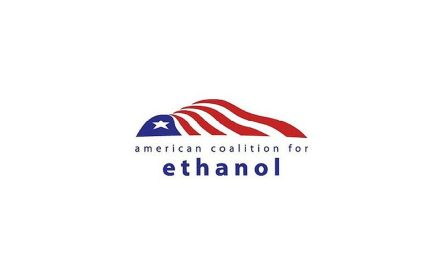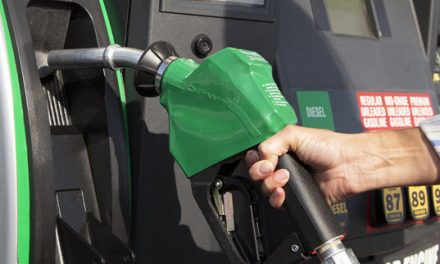Most drivers habitually pull up to the pump when their tank is running low, choose their fuel option and refuel without much thought. So, it shouldn’t come as a surprise that one (yes, just one) barrier to electric vehicle (EV) adoption is that “refueling” an EV requires drivers to completely change their behavior to create a new habit. For some consumers, change may be welcome. But for those who grew up with a conventional gasoline-powered vehicle, change may not come as easy.
At the Fuels Institute’s Annual Meeting in Denver last week, Matthew Willcox, Executive Director of the Institute on Decision Making, fielded questions about consumer behavior as it relates to EV adoption, as well as higher octane fuels and purchasing fuel-efficient vehicles.
“People make many decisions every day,” but the ones that are most interesting are the stubborn problems, explained Willcox, author of The Business of Choice: Marketing to Consumers’ Instincts. These stubborn problems fly in the face of human nature, he said, noting that the solutions “make perfect rational sense,” like saving for retirement or taking medications, “yet $100 billion is wasted every year in the United States by people not taking their medications properly.”
What might be the more intuitive or emotional barriers for consumers regarding EV adoption? Our automated habits are one possible explanation. “What we do on autopilot saves us energy,” Willcox said. The switch to an EV battles against what feels natural for consumers to do.
Consumer choices are also a form of communication. “When we make a choice, we are communicating with other people,” like the clothes we wear and the cars we drive. “We spend so much time talking about our choices, and I think that’s a great opportunity with EVs,” he said.
People also like to beat the system—or rather, do the right thing for the wrong reason. “When people feel like they’ve beaten the system, it makes them feel good, and it makes them feel good about the brand associated with them doing that,” Willcox explained. For example, a single-occupant EV driver in California is allowed to use the HOV lane: “Nothing can be better than scooting past all of those people in traffic.”
What Willcox explained as moral licensing is “another wrong reason for doing the right thing with EVs.” It means that if we do something good, we reward ourselves by doing something that is not as good. For example, running five miles on the treadmill, then splurging on a cheeseburger, fries and a milkshake. Or EV owners who charge their car outside their house, yet leave all the lights on in their house. “This idea of looking at the wrong reasons for doing the right thing and trying to find those emotional and more intuitive drivers that feed human nature might be an interesting approach to greater EV adoption,” he said.
The discussion segued into consumer behavior regarding higher octane fuel, and how to go about getting consumers to consciously change how they fill up their vehicle at the pump.
“There are a few things working for you, even if they’re not working for you yet, and that’s higher octane intuitively sounds better,” which acts as one anchor to making a choice, said Willcox. However, he doesn’t see the choice for octane as doing the right thing for the wrong reason. “I don’t think people have either a right or wrong reason for buying high octane fuel” because it’s difficult for them to conceive of what it is.
“You can’t expect consumers to take on huge amounts of knowledge” with so many other things going on in their lives, suggested Willcox, adding that they don’t want a chemistry lecture about high octane. “But what can be effective is giving them a sense of what it’s like.” When people are evaluating something, the first question is not, “What is that?” Instead, the question people ask themselves is, “What is that like that I know already?” This line of questioning is actually more efficient. “Deliberative thinking takes up a lot of energy,” he said, noting that we often look for similarities through the use of metaphors.
Willcox explained that metaphors are a powerful way of giving a framework to something we already know. However, although there are no readily available metaphors for what octane is, creating one would make octane more relatable for consumers.
The next question focused on consumer adoption of autonomous vehicles. While evidence suggests that autonomous technology is safer than human drivers, Willcox doesn’t believe safety is the barrier for consumers. “Safety might not be as big of a concern to people as you might think it should be,” he said. First, there’s the overconfidence bias, where people are more confident in their ability to do things than they rationally should be. In terms of getting behind the wheel, consumers often believe they are better drivers than they are. Second is the optimism bias: although we acknowledge bad things can happen, we don’t believe they will happen to us or the people we know—“it’s one of the most dangerous biases in terms of making choices that there is,” he said.
“Telling people that [autonomous technology] is going to be the safest way to travel” may not be a pervasive strategy for greater consumer adoption. “I think the big question is going to be understanding what people might be giving up” with autonomous, Willcox said. “One thing drivers are giving up is control,” or in other words, loss aversion: how we avoid losing and giving up the things we already have. “We’re hard-wired to avoid losses,” he said. “Try to better understand what people might be giving up. … Safety is a benefit, convenience is a benefit, but how do you make people feel like they’re not giving up something” by adopting autonomous vehicles?
Also, if there’s no driver in an autonomous vehicle, there’s nobody to blame if something goes wrong. “It’s not that we always want to make the right decisions, but we don’t want to feel like we made the wrong decision,” Willcox said.
The Fuels Institute’s Annual Meeting took place May 23 – 25 in Denver, with more than 100 fuel and automotive industry stakeholders focusing on influential market trends that will impact consumers and the current and future transportation market. For more information about the Fuels Institute and its research initiatives, go to FuelsInstitute.org.









